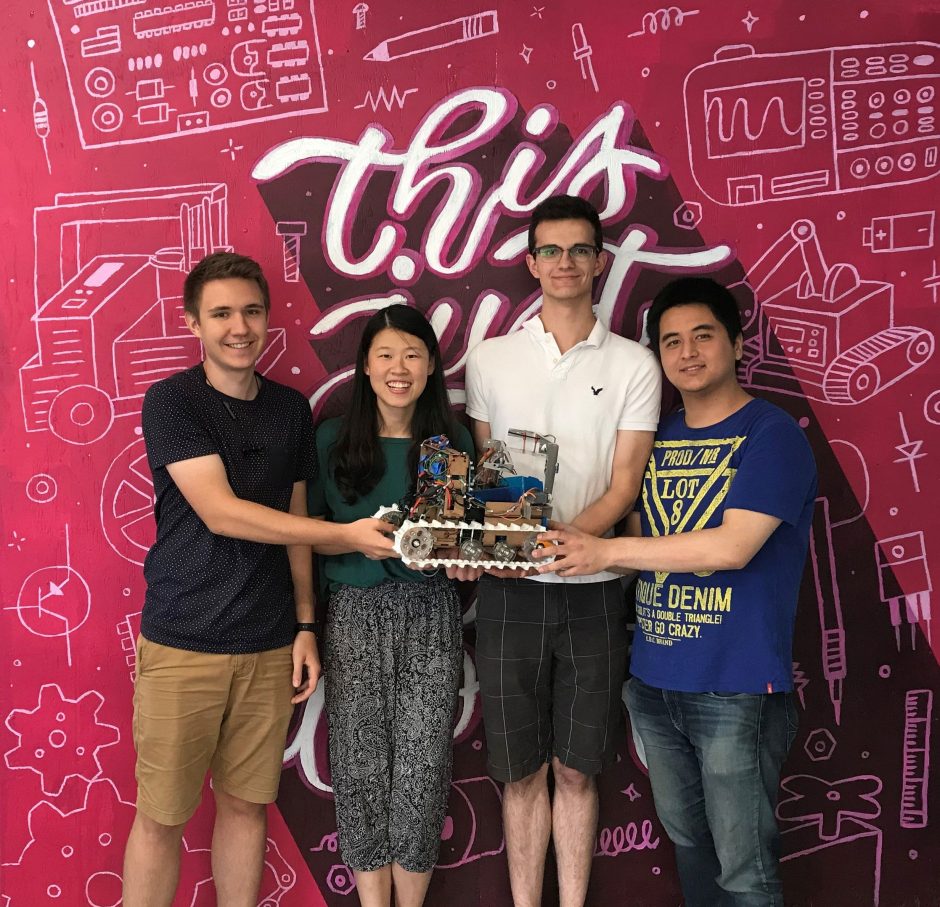Congratulations to all the competitors for an amazing event. Well done!
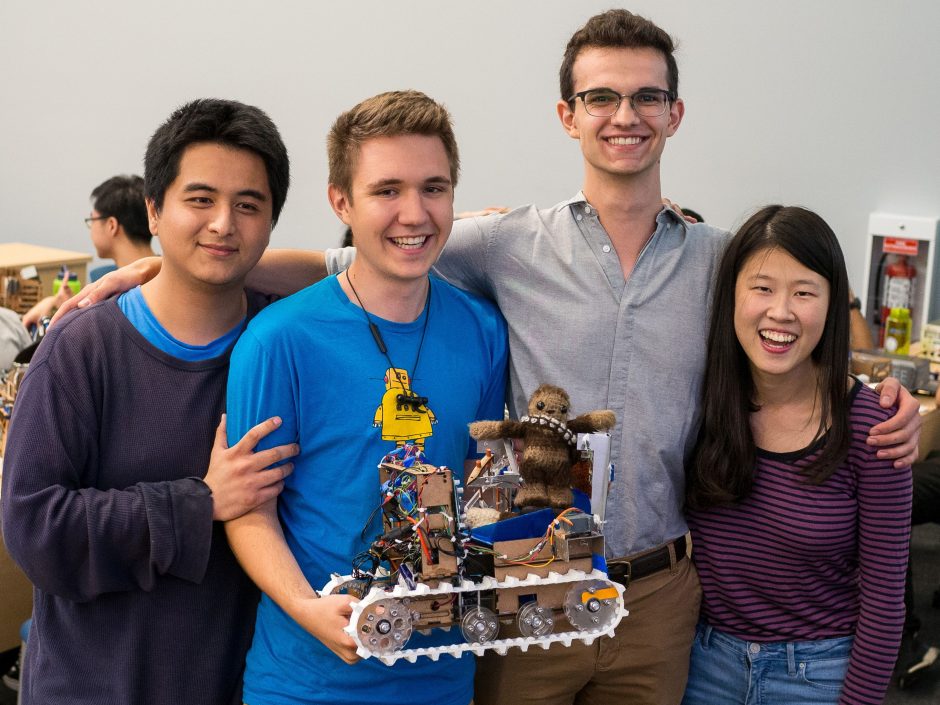
… They didn’t really think they would win, and their robot was not working just hours before the competition. The Winning Team L to R: Forbes Choy, Vladislav Pomogaev, Vladimir Novakovic, Chuan Du
Team Admiral Trackbar:
“We got a taste of how much work it takes to do a seemingly straightforward task. We realized the importance of defining the scope of the problem you want to solve, and setting realistic goals. If you keep these in mind whenever you design a component of the robot, it can help you from over-complicating the design. The reason that keeping a design simple is good in the context of the robot course is that no matter how complex or simple your design is, it has to be reliable. It is more feasible to make a simple design reliable in the limited time available.
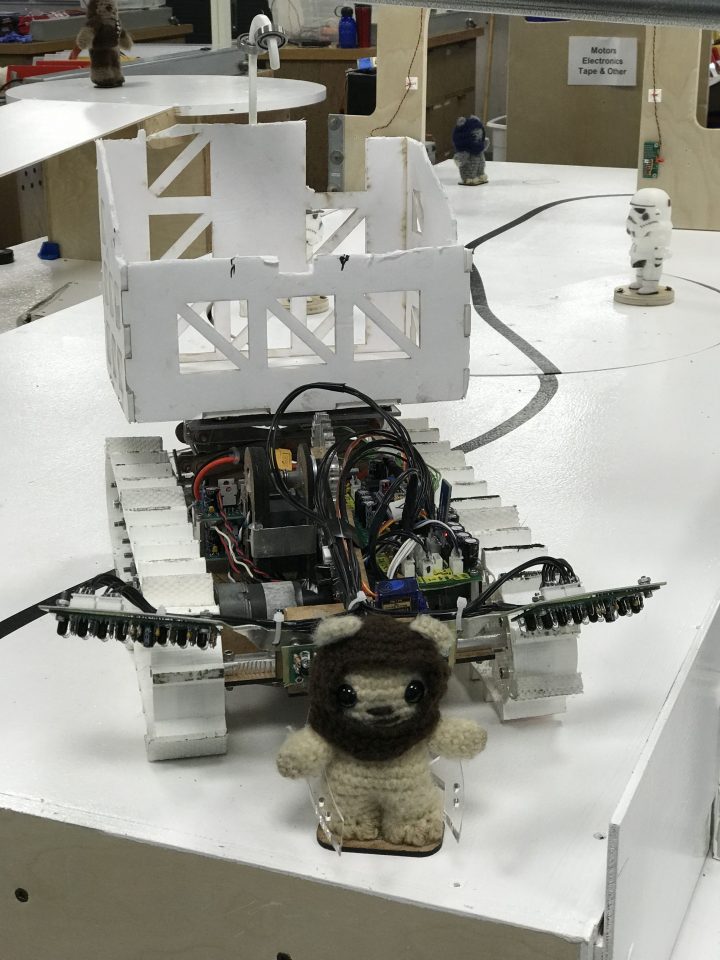
This is the first version of our robot.
We did a major redesign of our robot in the 5 days leading up to the competition. It looks very different from the first iteration. Our new design allowed our robot to be more consistent in detecting and picking up the Ewoks.
The days leading up to the competition really sneak up on you. There is just so much to do in the last bit of the time available that all of your effort goes to working on the robot, and you just forget to pay attention to anything else. It was an intense summer, but it was also a dream come true. Who else gets to spend all day building robots?
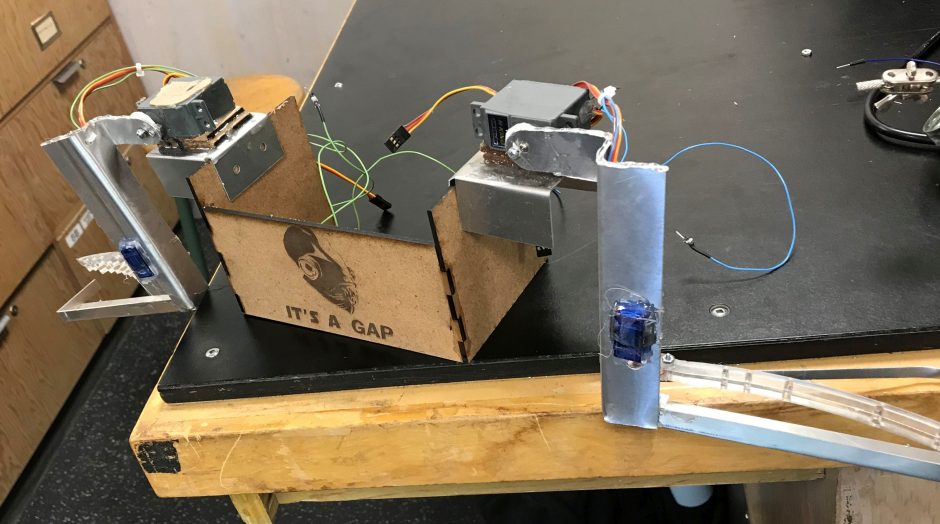
Our original robot had a single front facing arm. The new iteration has two side arms.
It was hard work, and in the last week, we were all working 15 hours a day. The biggest challenge wasn’t to finish building components, creating electronics, or writing large chunks of code, the biggest challenge was the small incremental changes to tune the robot. Building a robot that works once is easy; building a robot that works consistently is difficult.
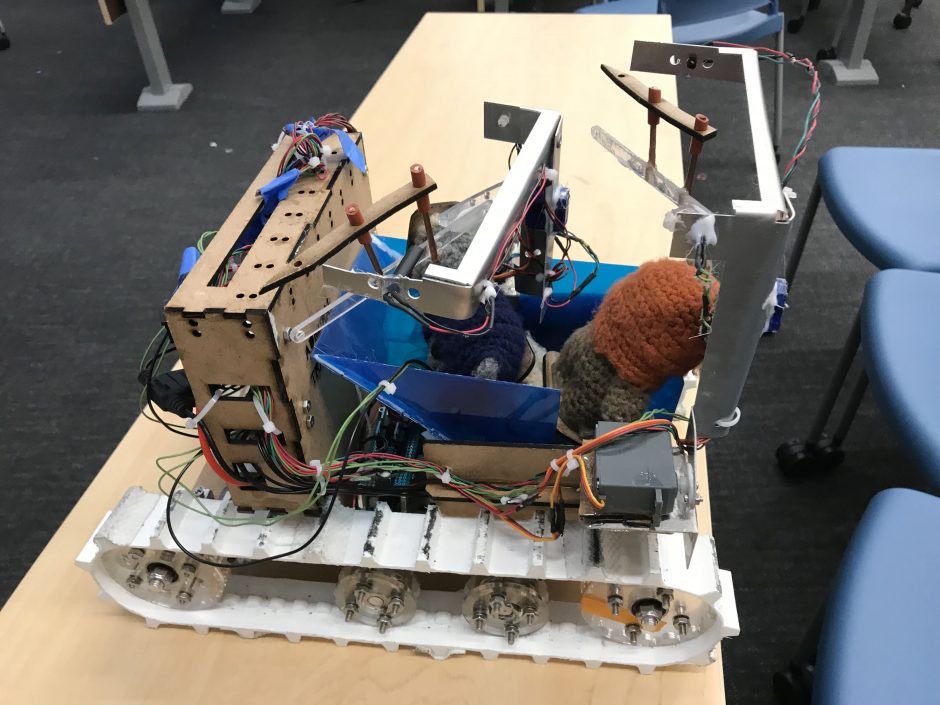
This is the final version.
We want to thank all the instructors and teaching assistants for putting the time into making the course possible. There were many late nights and they were right there with us lending their support. We are very grateful for this memorable learning experience.”
